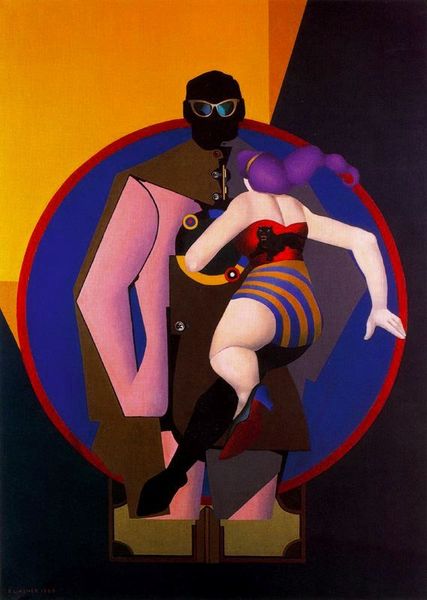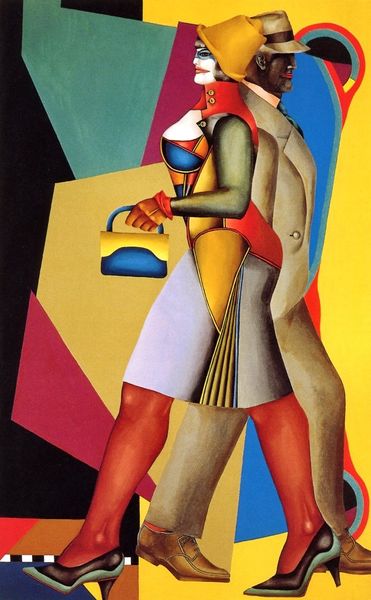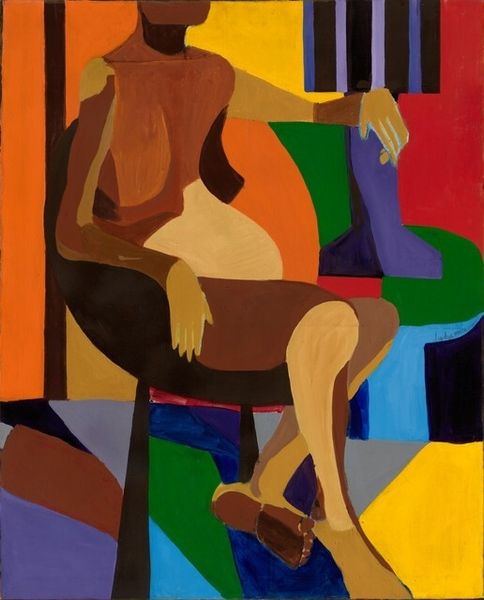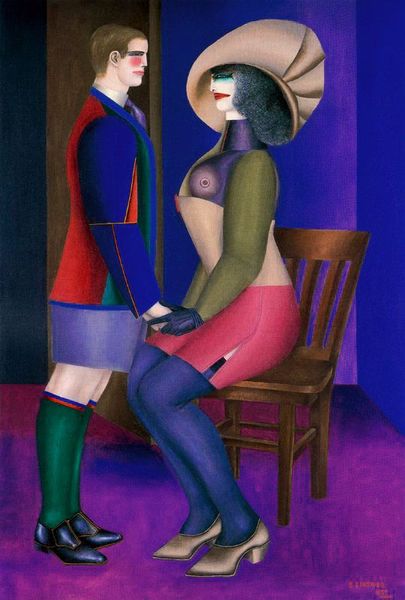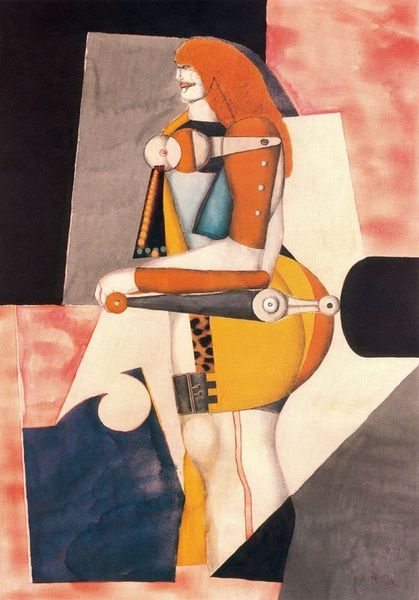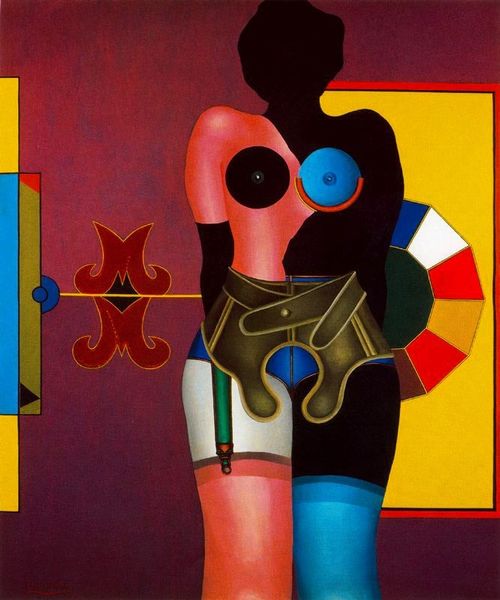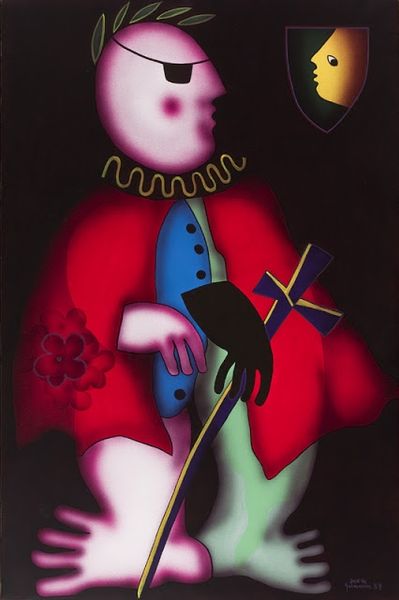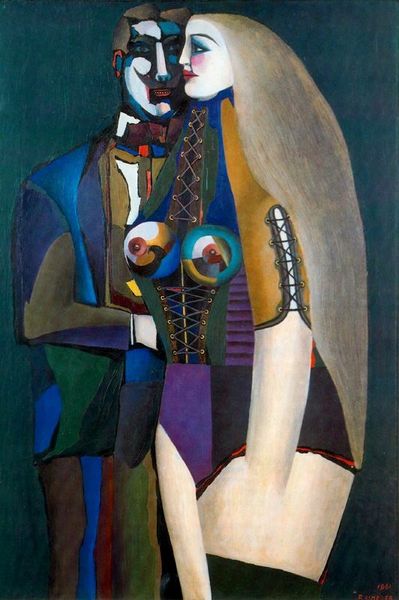
painting, acrylic-paint
#
portrait
#
painting
#
pop art
#
acrylic-paint
#
figuration
#
acrylic on canvas
#
group-portraits
#
pop-art
#
modernism
Copyright: Richard Lindner,Fair Use
Curator: This painting is called "Untitled No. 2", rendered in acrylic paint. The artist is Richard Lindner, known for his contributions to Pop Art and modern figuration. What strikes you initially about this piece? Editor: Stark... the colors pop, of course, but the mood is more... icy. I see power, a very calculated gaze. There's an artificiality that I find unsettling, and a definite 1950s/60s fashion magazine vibe. It reminds me of certain works by Warhol. Curator: You’ve identified key elements of Lindner's approach. He embraced Pop Art's aesthetic, adopting its vibrant palette. He certainly had an interest in high society and fashion, which became increasingly popular and idealized after the war and through media channels. Note how he exaggerates the human form – the angularity, the hard lines, the deliberate distortions. He pushes beyond mere representation. Editor: Absolutely, she’s a doll come to life... if dolls were secretly running the world, maybe! But tell me, beyond just a pop-art aesthetic, did the artist make a clear attempt at social critique? I feel there might be a bit of rebellion brewing beneath the polished surface. Curator: Certainly. Although Lindner embraced popular imagery, he did so with a critical edge. Consider his personal history: a Jewish German émigré who fled Nazi Germany, then found himself confronting consumer culture in the U.S. He uses that vibrant palette ironically to explore themes of power, gender roles, and alienation within post-war consumer society. Editor: I pick up on that "alienation." Their gaze says "look, but don’t touch," like looking into a shop window—desire but detachment, very alluring. I think Lindner does a great job exploring human relations in public sphere... it might also speak to private turmoil. Curator: That duality, public presentation versus private experience, is indeed a crucial theme. And it echoes within art's own complicated relationship with its audiences in mid-century America, for whom art had both expanded in scope, yet remained largely exclusive. Thank you for your insight, it is truly fascinating to look at art together in this way. Editor: My pleasure, it certainly opened up my eyes. I feel energized to look at Lindner's work with this perspective!
Comments
No comments
Be the first to comment and join the conversation on the ultimate creative platform.

